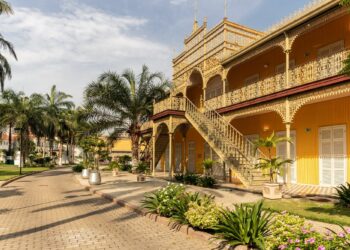The FNB JoburgArtFair Talks Programme takes place on Saturday, 8 September at the Auto & General Theatre in Nelson Mandela Square from 11h00 to 19h00. Admission is free and there are no reservations – so it’s on a first come, first served basis.
Focusing on the theme, Reconstituting Contemporary Art Public, the curator of the programme, Kabelo Malatsie, says:
There has been a tiny shift in the public that is consuming contemporary art in South Africa. This shift is mainly visible by looking at the FNB JoburgArtFair’s audience which has become increasingly young and black. Young artists have also shifted what constitutes contemporary art public. The boundary of art has also been shifted and its audience reconstituted, this can be seen through FAKA’s (Fela Gucci and Desire Marea) practice which has recently reached a height that is unprecedented. Their song Unyang’khumbula was played for Versace’s runway showcase in June 2018 in Milan.
I mention FAKA because they started working in contemporary art and in recent times have been making music. FAKA has managed to reach an audience that is a little bit mainstream even though it is very specific in that is queer and young however their audience is large when considering it within contemporary art. Is it time that institutions, curators and artists really sought to engage an audience that is not the average art enthusiast? If so, what language should be used to engage this audience? The current art audience which includes artists, curators, critics, academics and collectors has necessitated that contemporary art speaks from a western perspective and framework.
Here, I am mainly speaking of the mechanism that packages artistic practice the institution, curators and critics. If this mechanism was reimagined/reconstituted what public could it engage? With the advent of wokeness, Global South and the accessibility brought by the internet and a seemingly politicised world how should the art mechanism shift to respond to the times that we live in which demands greater inclusivity that is not at face value.
The talks programme is a provocation for art practitioners to tackle the question “Who’s It For?” in the hope that this question instigates discussions beyond this programme.
Participants can choose from the following discussion:
11h00 – 12h00
This conversation focuses on the role of collectors in supporting artistic practice beyond buying artworks. Emile Stipp is a well-respected collector who has been supporting artists not only through buying but also supporting the publication of catalogues, artist’s books and photo-books and playing a role as a patron of museums such as Tate.
Collecting: beyond buying art – Emile Stipp (collector of books and art) in conversation with Pulane Kingston (attorney with interests in culture & visual arts)
12h00 – 12h45
Break
12h45 – 13h45
Music as a living archive has been beautifully performed by Neo Muyanga through his narration of history through struggle song or the Shembe church. His performance adds a dynamic understanding of the museum as a capsule of history that can have an impact on the everyday.
Revolting Song performance by Neo Muyanga
14h00 – 15h00
This discussion will focus on museology and the accountability of the museum to its public particularly at this moment of political upheaval. Panel discussion – Public art museums Panelists: Khwezi Gule (Chief curator of Johannesburg Art Gallery), Gus Casely- Hayford (Smithsonian Museum for African American History and Culture Director), moderated by Molemo Moiloa (deputy director of Johannesburg Contemporary Art Foundation)
15h15 – 16h00
Artists talk: Featured Artist Billie Zangewa in conversation with Dr. Same Mdluli (Manager of the Standard Bank Gallery in Johannesburg)
16h15 – 17h15
Curators and writers are well positioned to introduce and canonise alternative discourses that are outside the dominant narratives. This panel discussion will speak to artistic and curatorial practices that are geared at mobilising new audiences.
Future Now: Nontobeko Ntombela (curator),Antwaun Sargent (American writer) & Rebecca Proctor (editor in chief of Harper’s Bazaar Art) moderated by Milisuthando Bongela (Mail & Guardian’s arts and culture editor)
17h30 – 19h00
Art21 Film Premiere: “Art in the Twenty-First Century: Johannesburg” with Q&A special preview of the Johannesburg episode of Art in the Twenty-First Century, featuring artists David Goldblatt, Nicholas Hlobo, Zanele Muholi, and Robin Rhode. Produced by Art21, the Johannesburg episode is one of three new films that comprise Season 9 of Art in the Twenty-First Century. the longest running U.S. television series on contemporary art and artists.
The FNB JoburgArtFair takes place at the Sandton Convention Centre, Exhibition Hall 1, 161 Maude Street, Sandton.
Dates:
6 – 9 September 2018
Opening times:
Thursday, 6 September: Opening Night 6:30 – 9pm
Friday, 7 September: 11am – 8pm
Saturday, 8 September: 11am – 7pm
Sunday, 9 September: 11am – 5pm
Early Bird Tickets R125 available at tixsa.co.za
For more information visit www.fnbjoburgartfair.co.za



